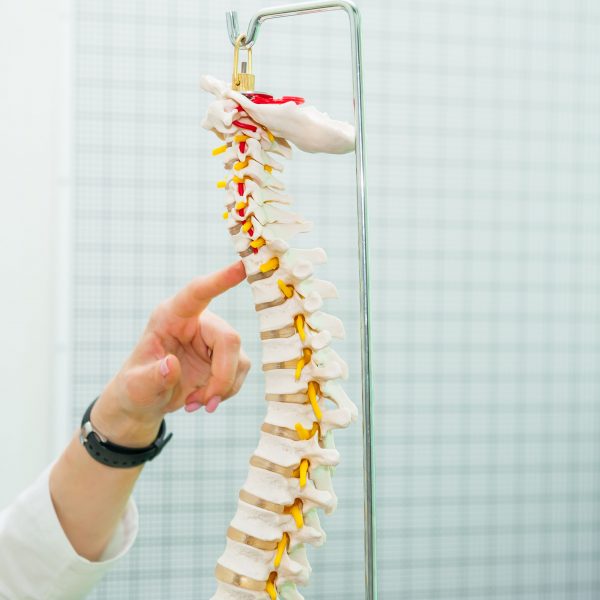Although a developed country, the United States still has a huge hunger problem. In 2017, 40 million people struggled with hunger because they didn’t have enough to eat, while 15 million households were considered “food insecure” by the USDA (Department of Agriculture).
And just because your family has something to eat at home doesn’t mean you are getting the nutrients you need to function throughout the day. Worldwide, over two billion people have micronutrient deficiencies because they aren’t getting their daily requirement for vitamins and minerals. And, apparently, it’s an issue that has existed since the early 20th century.
In the 1930s and 19403, fortified foods were introduced to the public. This was supposed to be a solution to increase the nutrients in food the public was already eating. That way, no one would have to change their diet to get more nutrients as these were already added to everyday food products.
But just how healthy and safe is it to have a diet filled with fortified foods? Here’s everything you need to know about food fortification, what are fortified foods, examples of these foods, and whether or not they’re worth adding to your diet.
Table of Contents
What Are Fortified Foods?
Fortified foods are food products that have additional nutrients added to them, nutrients that don’t naturally occur in those foods. For example, regular milk is filled with calcium, but fortified milk has added vitamin D. Naturally, there is little to no vitamin D in milk, but fortifying it ensures whoever drinks it receives the necessary vitamin D to function for the day.
This is meant to improve nutrition and provide consumers with more nutrients when they eat. Fortified food caters to various reasons: for people who do not have the means to eat enough, picky eaters (especially considering young children’s appetites), and those who cannot eat certain foods for medical purposes and may have a nutrient deficiency.
Fortified Food vs. Enriched Food
This is different from “enriched” food. When food is enriched, it means that nutrients that were lost during food processing are artificially re-added back in. For example, during the process to make white rice, a lot of its natural nutrients are lost during the process. So, these nutrients are re-added through further processing to restore it to its natural levels.
How Are Nutrients Added to Fortified Food?
Food fortification has three main methods: commercial fortification, biofortification, and home fortification.
Commercial fortification means nutrients are added during food processing. Common examples are grain and wheat-based products like flour, cornmeal, and rice that are added with nutrients before they are packaged.
Biofortification is the process of breeding crops a certain way to increase how much nutrients it naturally contains. This may be done through natural means like selective breeding, or more complex processes like genetically engineering plants and animals to produce more nutrients in their products.
Home fortification is the simplest kind done by people who do not have access to fortified food products on the market. They have vitamin drops, powders, or pills, that are manually mixed in with the food, thus fortifying their own food.
Are Fortified Foods Legal?
Yes, food fortification is legal in the United States. The act of food fortification is done either by private food manufacturers or by governments. This process (along with food enriching) is recognized by the World Health Organization (WHO) and the Agricultural Organization of the United Nations (FAO).
While we can trace food fortification back to the ’30s, it wasn’t until the ’90s when the WHO and FAO got over 159 countries to pledge to help combat nutritional deficiencies. These countries recognized that food fortification wasn’t enough, but it was a step towards helping those with nutrient deficiencies.
Are Fortified Foods Good for You?
Historical data suggests that fortified foods can be good for consumers, especially children. From the time the US began fortifying their foods, diseases like rickets, goiter, and pellagra caused by nutrient deficiencies have gone down, which would suggest that it is beneficial. However, as the WHO countries found, this is not a completely effective method to eradicate nutrient deficiency on its own.
That does not mean that fortified foods are automatically good. Some manufacturers fortify their junk food, sugary cereals, or sweetened beverages, but that does not make it totally healthy food. Like all types of food, moderation is always key.
How Effective Are Fortified Foods?
While fortified foods can add to a person’s nutritional diet, there are limits to how helpful this process can be. If a person is already getting enough nutrients in their diet, eating fortified foods may give them excessive amounts of a certain nutrient, which can lead to side effects on their health.
The WHO also recognizes how, by fortifying food, consumers may find themselves limited to fortified options even if they do not want them. The added process can be an added cost on the manufacturer, which may translate to higher food costs for the consumer (which cancels out the point of fortifying food for those who cannot afford to eat enough).
And then there’s the issue of limited absorption, which questions just how effective fortified foods can be. Just because there are added nutrients to a certain food product does not mean it will be absorbed when a consumer eats it. For example, if a person drinks skim milk fortified with vitamin A and vitamin D, there is no guarantee that they will absorb these nutrients because they are fat-soluble and non-water-soluble nutrients.
Are Fortified Foods Organic?
Because these foods are artificially fortified, these foods are not organic and are considered genetically modified food, or a GMF. This is particularly true with biofortified foods that were engineered to contain more nutrients than it does naturally.
While this doesn’t necessarily mean fortified foods are unhealthy, those who have a strictly organic diet may not want to eat them. In terms of GMFs, the laws and regulations on food and crops vary between countries.
Examples of Fortified Foods

You can find plenty of fortified foods in your local grocery store or supermarket. To tell if a product is fortified, you need to check the label. The packaging will usually indicate if a product is fortified, and you can see it in the nutritional facts. A few common examples include:
- Flour, rice, oats, grains
- Dairy products (cheese, milk, yogurt)
- Noodles, chips, cereals, bread
- Processed beverages
- Canned goods (meats are usually fortified in iron for iron-deficiency anemia)
Who Needs Fortified Foods?
Anyone can eat fortified foods, but those who are more likely to benefit from these products include:
- Children – picky eaters who do not eat certain foods rich in nutrients
- Young children and teens who need more nutrients for growth and puberty
- Pregnant women – pregnant women have a higher risk of developing iron-deficiency anemia because their fetus also absorbs part of their iron intake
- Older adults – more prone to bone deficiencies and will need higher calcium and vitamin A intake
- People with dietary restrictions – those with voluntary special diets (e.g. vegetarianism, veganism) who may unknowingly have a nutrient deficiency or people with medical restrictions (i.e. allergies)
- People who cannot afford to eat enough to meet their daily nutrient requirements
For people who do not fall within these groups, it is still safe to eat fortified foods, but in moderation. And for those that are, the effectiveness of fortified foods isn’t set in stone, which means that while it can help your diet, there must still be a balance of other foods and nutrient sources to help you fill your daily vitamin requirement.
Too Much Fortified Food

Fortified foods can be helpful, but just like any other type of food in the market, too much of something is never a good idea. For example, there are plenty of iron-enriched foods on the market, but too much iron can lead to diseases like hemochromatosis.
This also shouldn’t be an excuse to substitute fortified foods for the real deal. If you have the option of getting your daily iron needs from fresh leafy greens or a fortified snack loaded in sugars and preservatives, the better option will always be vegetables.
Finally, if you aren’t comfortable with the idea of fortified foods but are unable to eat enough food to reach your daily nutrition count, another option is to take nutritional supplements available in your drugstore. However, to be safe and avoid overdosing, you should consult with your doctor before taking any supplements.
Conclusion
Fortified foods can benefit many people around the world. These types of foods won’t solve hunger or nutritional deficiency, but it can help many people who may not be getting enough nutrients from their regular diet.
There is no harm in eating fortified foods, but it’s important to consume these in moderation. An excess of nutrients can cause a number of health conditions, defeating the purpose of fortified foods and leading to more serious health problems that could have been avoided. So, always check the label and make sure you’re eating healthy whenever you can.






